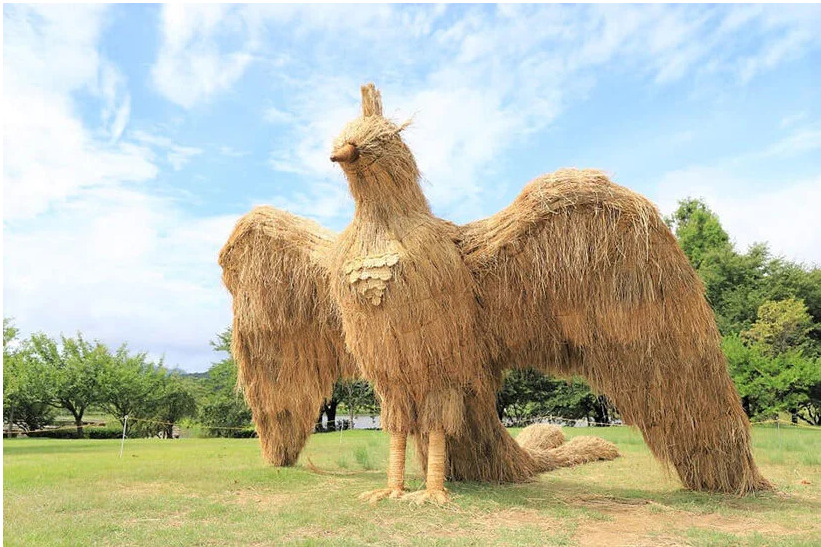Niigata Has Been Invaded By Huge Mythical Creatures Made From Straw!!
If you head to Niigata a right now, you’ll find giant lions and eagles as well as crabs, spiders, and other animals made from leftover straw from the seasonal harvest.
The monumental sculptures form part of the Wara art Festival — wara means “rice straw” in Japanese. This event started back in 2008 and is a collaboration between local farmers and the Tokyo art students.

Shinzo Miyajima, a professor at Musabi back in 2008, suggested the idea of local rejuvenation through the creation of artwork from rice straw. Rice straw comes from rice cultivation as by-products and has been used as fertilizer, feed livestock, and as a material to make household items since ancient times.
This tradition has progressed by modernization in agriculture and lifestyle changes.
Every year, musabi students have come up with new design ideas for their artwork. They then collaborate with local farmers and craftspeople. The art festival is a unique fusion of traditional techniques and artistic sensibilities, attracting people from all walks of life.
The technique used to process straw for wara-art is Toba-ami, an endangered traditional style.
This technique is simple and delicate, even though each rice straw piece is small and awkward. However, with the help of musabi students and vital patience, it transforms into vibrant artwork that almost feels alive.
The festival couldn’t take place in 2020 due to the pandemic. It is now back for its 13th anniversary. The theme for this year is “Lucky things that bring vitality and joy to all who see them”. The display will end on October 31st, Niigata is inviting people to visit the local Uwasekigata Park.
All imaged are from Wara-art Festival
Also read about Wara-art festival of 2019
